Chapter 1, Part 15
Across the Bay of Bengal, to the southwest of Narapatisithu’s Bagan, a great king ruled the people on the island of Lanka. Parakramabahu was credited not only for uniting the three Sinhalese kingdoms of Rajarata, Ruhuna and Dakkhinadesa into a unified kingdom of Polonnaruwa in the mid-12th century, but also for the Buddhist monuments, administrative buildings, and a large man-made reservoir he commissioned.
Polonnaruwa was the second oldest kingdom in what is today Sri Lanka, after Anuradhapura which in the early seventh century fell to the Cholas from the land of the Tamils (Tamilakam) in southern India. Rajendra Chola I, son of Rajaraja Chola I who built the magnificent Brihadeeswarar temple in Thanjavur, began a period of Chola occupation of Lanka. It was during this period when the capital of Lanka shifted from Anuradhapura, from which the island had been ruled for more than a millennium, to Polonnaruwa further southeast.
Chola’s rule of Polonnaruwa was marked by the decreasing influence of Buddhism in society and the rise of Hinduism to prominence. One evidence to this was the absence of cow at the moonstones in the new capital due to the animal’s sanctity in Hinduism. Today in many parts of India cow slaughter is either discouraged or banned altogether.
In 1070 a local ruler called Vijayabahu successfully defeated the Cholas in Polonnaruwa and became the first Sinhalese king after more than a century of foreign rule. His reign marked the return of Buddhism as the main religion of the kingdom, and a close alliance with King Anawrahta from Bagan who sent his monks to ordain new monks in Lanka ensured a solid comeback of the teachings of the Buddha on the island.
After Vijayabahu died, small Sinhalese kingdoms emerged. But four decades later a new king, Parakramabahu, ascended the throne and united the Sinhalese people once again. The new king was known for his wisdom in not wasting even a single drop of water from the sky, hence the construction of a large reservoir directly to the west of the center of the kingdom. A new palace was built, as well as a council chamber not far from it, decorated with typical Sinhalese ornaments and symbols. The kingdom thrived.
A few hundreds meters to the north of the palace, sat a compound of the most sacred religious buildings constructed during the Polonnaruwa period. Collectively known as the Sacred Quadrangle, today it houses the remains of structures believed to once hold the relics of the Buddha. Built during Vijayabahu’s reign, Atadage is one of the oldest monuments in the quadrangle. Meanwhile, the construction of nearby Hatadage commenced during Parakramabahu’s rule and finished under Nissanka Malla’s, Parakramabahu’s successor who was also responsible for erecting Vatadage, the biggest and most iconic structure in the Sacred Quadrangle.
Outside the main palace complex and the Sacred Quadrangle, two sites are testament to Polonnaruwa’s significance in the past as well as its long history which is still partially enshrouded in mystery.
Gal Vihara is located some 2 km north of the Sacred Quadrangle. Housing four massive rock-hewn statues of the Buddha, this canopy-covered open-air site was filled with pilgrims, mostly wearing white outfit and all barefoot, at the time of our visit. Approximately 3 km to the south of the quadrangle a statue sat in solitude within Potgul Vihara compound. Some people believe it is the statue of Parakramabahu, the great king himself, but some historians disagree for its long beard, mustache, hair style, clothing, and pot belly are not what one would expect from a statue of a venerated king.
In the 13th century Kalinga Magha, a prince from the kingdom of Kalinga in present-day Odisha in India, invaded Lanka and conquered Polonnaruwa. This led to a huge number of Sinhalese people fleeing to the south and west of the island, marking the demise of the kingdom of Polonnaruwa. In the aftermath of the conquest, the Hindu kingdom of Jaffna was established by the foreign prince on the northern part of the island, an important turn of event in Sri Lanka’s history which would indirectly fuel a prolonged civil war in the 20th century.
As the Sinhalese lost their dominance and the Tamils consolidated their grip of power in the northern part of the island, a new king emerged in Bagan. Htilominlo, the new king of the Buddhist empire to the far northeast of Lanka, ascended the throne in a time when the once powerful kingdom began its decline.
Click here for the full list of stories from the Spice Odyssey series.

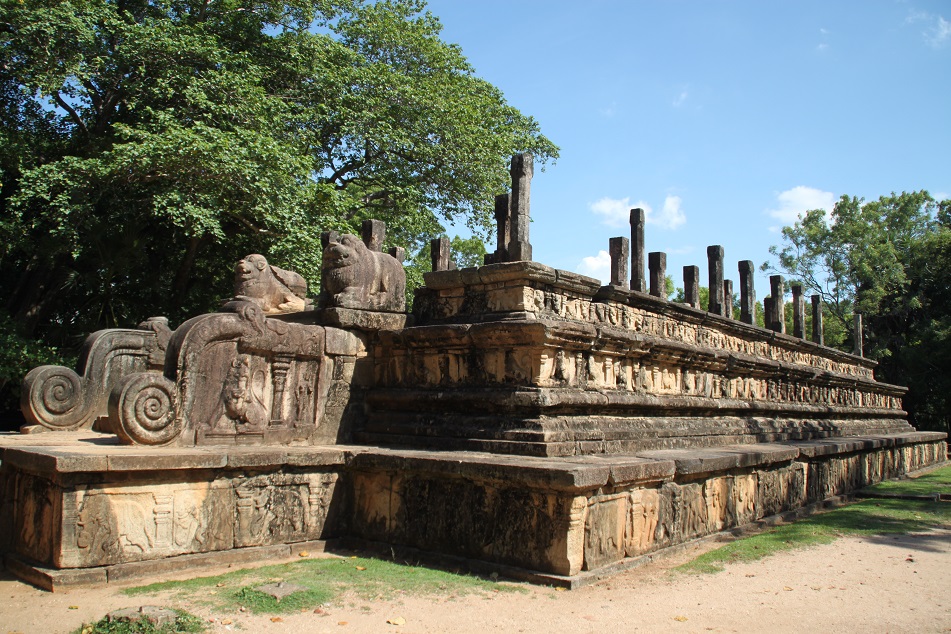
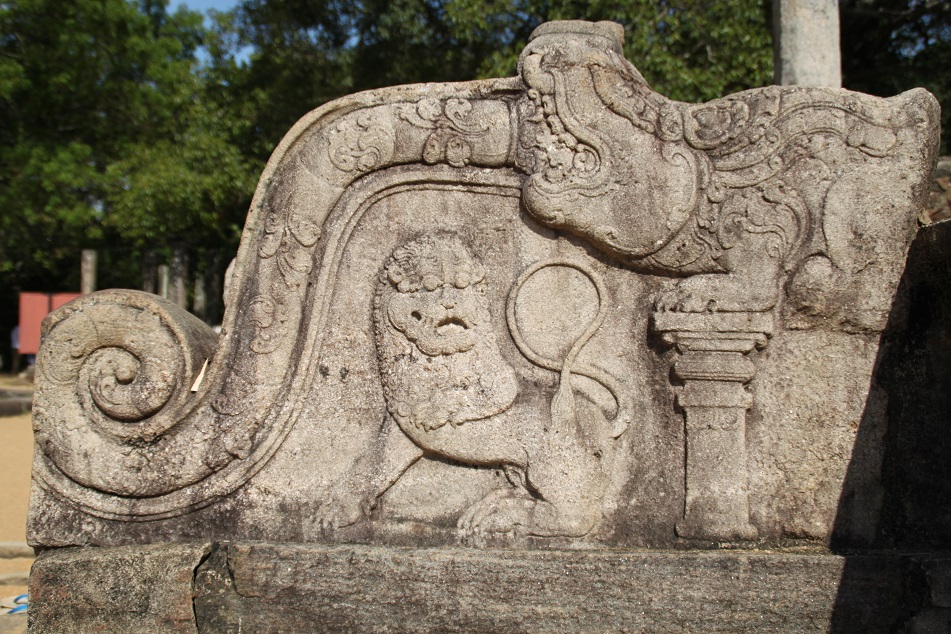
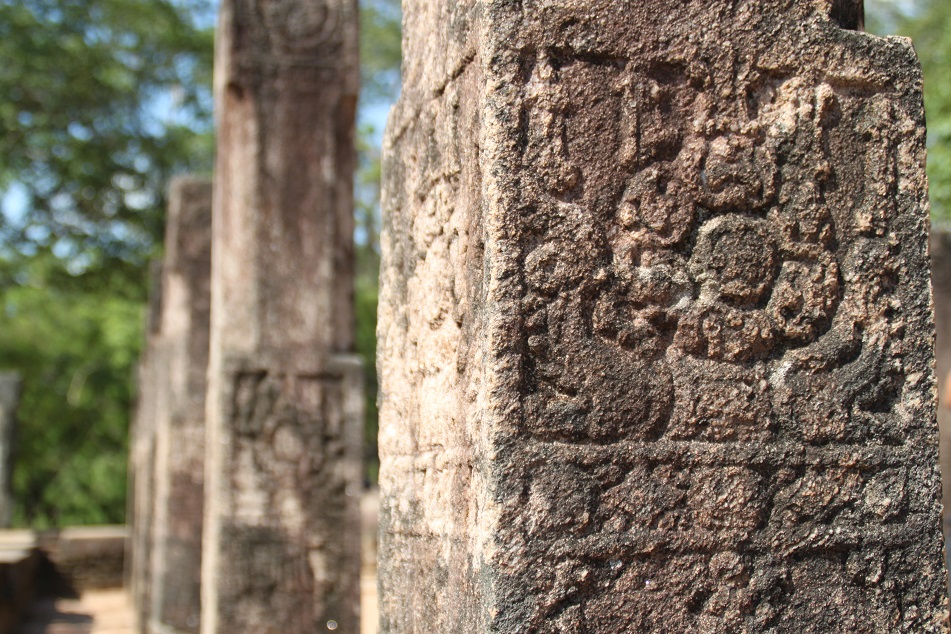

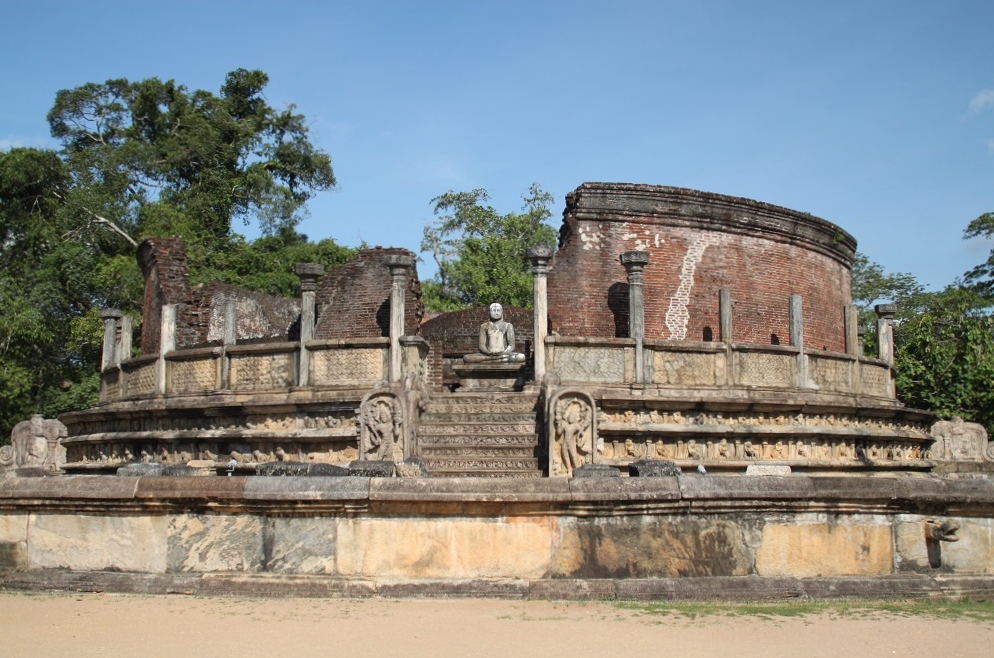



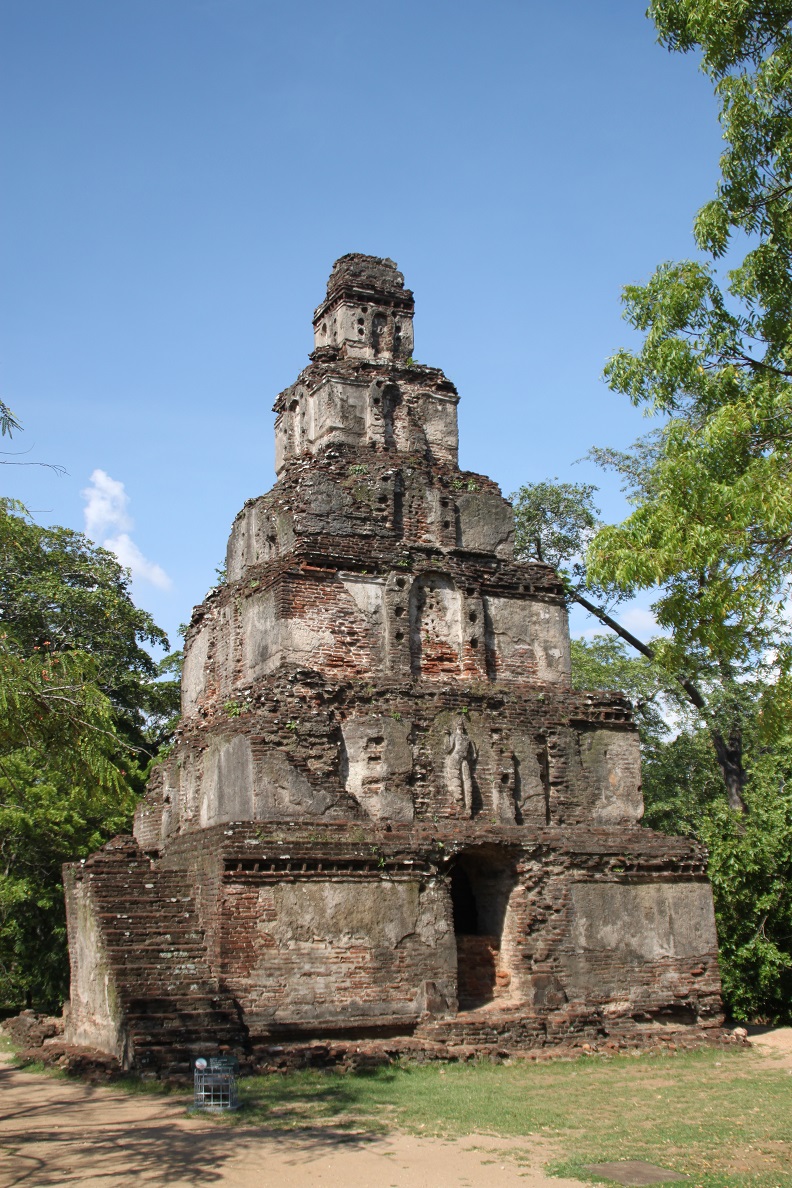

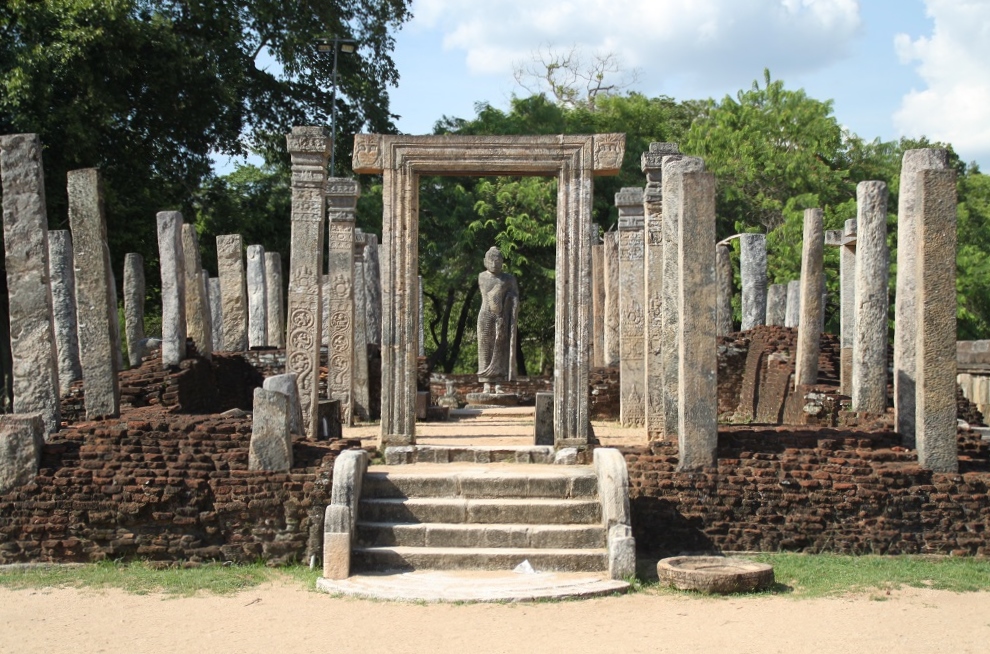






Magnifique, Bama… as usual great story and photos.
Hahaha… cant believe my eyes to see the curvy pillars… at first I thought I see those pillars with my sleepy eyes, but heiiii… they’re curvy!
Btw, srilanka – pagan kan lumayan jauh ya.. kan melewati bangladesh kini trus laut. Hebat ya hubungan bilateralnya.
LikeLike
Hihihi yang terakhir ini memang dibaca pake sleepy eyes hahaha… seharusnya aku tanya ada ga hub bilateral antara keduanya hehehe.
LikeLike
Hehehe, maklum Minggu pagi mbak, waktunya leyeh-leyeh. Jadi dulu setelah lama berada di bawah kekuasaan dinasti Chola, agama Hindu menjadi dominan di Lanka dan akibatnya jumlah biksu pun turun drastis. Ketika Lanka kembali dikuasai oleh penduduk Sinhala, mereka meminta bantuan Anawrahta, raja Bagan pada waktu itu, untuk mengirimkan biksunya untuk menahbiskan bisku-biksu baru di Lanka. Dari hasil traveling saya 6 bulan tahun kemarin memang saya belajar betapa dulu bangsa-bangsa di Asia Selatan dan Tenggara saling terhubung erat satu sama lain.
Btw, those curvy pillars were my favorite part of the Sacred Quadrangle. I don’t think I’ve seen anything like it anywhere else. Thanks!
LikeLike
Nah penjelasannya enak, thank you ya.. makin pengen ke srilanka…
LikeLike
Sama-sama. Mbak Riyanti pasti suka deh sama Sri Lanka, kita kan sama-sama suka sejarah dan candi-candi. 🙂
LikeLiked by 1 person
Selesai dari Bagan dibawa ke Sri Lanka, ini mengalir semua ceritanya, Bama. Arca dan relief di sana juga diadaptasi oleh candi-candi Kerajaan Mataram Kuna, seperti lion dan ukiran faunanya. Empat jempol for you 😀
LikeLike
Thanks a lot, Halim. Bahkan di lokasi dimana kraton Ratu Boko berdiri, dulunya ada sebuah wihara bernama Abhayagiri, persis sama namanya dengan Abhayagiri di Sri Lanka. Banyak yang berpendapat bahwa Abhayagiri di Jawa memang terinspirasi oleh yang ada di Sri Lanka, meskipun sebagian besar sepakat bahwa versi di Jawa lebih kecil. Sangat membuka mata sih memperlajari sejarah kerajaan-kerajaan di selatan dan tenggara Asia ini, betapa dulu kita dan mereka saling terhubung satu sama lain.
LikeLiked by 1 person
Magnificent picture as always, Bama! I’ll be waiting for more of your posts!
LikeLike
Thank you, Laksmi. More posts are coming your way. 🙂
LikeLike
You chose a fine day for your photos! I love the curvy pillars and how you take pictures of little details like the one of the sculptured pillars! In July I’ll travel to Colombia and hope to take great pictures like you, and maybe you’ll check out my blog then, too 🙂
LikeLike
It wasn’t always sunny during my two-week stay in Sri Lanka, but I was glad my friend and I went to Polonnaruwa when the weather was nice. Those curvy pillars are really captivating, aren’t they? Oh I would love to visit Colombia one day since security has largely improved in the country, and it’s one of the not-too-many countries where Indonesians can go without having to get a visa in advance. 🙂 Looking forward to those posts of yours!
LikeLike
I think that rainy days have advantages as well, sometimes they lead you onto paths, into shops, to sites that you would never have chosen to see on a sunny day. I’d love you to check out my posts. I’ll post in German but I hope you’ll like the pictures nonetheless.
LikeLike
That’s true. Rainy days make us see things often overlooked on bright, sunny days. My German is limited to what I learned during my two-week stay in Germany and Austria back in 2007, but I’ll try. 🙂
LikeLike
Well, since I never seem to find the time to read your well-researched texts I won’t mind of you can’t comment on anything I say 😉 I’m happy for you to just enjoy the photographs 🙂
LikeLiked by 1 person
apik kak bama photonya
LikeLike
Makasih Win. 🙂
LikeLike
Amazing photos though it should be remembered the Veddas were the original inhabitants of Lanka so both the Tamil and SINhalese were invaders. Have you ever asked why there are no ancient Tamil ruins in the country? After all, they probably arrived first seeing they lived just across the Palk Straight whereas the originally SINhalese came from Bengal.
LikeLike
Great point, Mallee. Aboriginal people elsewhere around the world are often marginalized and even forgotten. The politics of race, another perennially contested issue apart from religion, has shaped the world as it is today. I wonder if there are actually Tamil ruins in Jaffna considering it is still predominantly Tamil and Hindu. A lot of people I met in Sri Lanka advised me to visit that part of the country, so that and the ancient ruins are the things I look forward to seeing the next time I come. Thanks for sharing the information.
LikeLiked by 1 person
I doubt you’d find any Hindu ruins. The SINhalese Government systematically destroyed them right around the island.
LikeLike
Race is a very delicate issue, so I will only speak based on what I know and what I observed during my trips to Sri Lanka in 2012 and 2015. I hardly heard any resentment from the Sinhalese towards the Tamils, and they only said good things: how good Tamil food is, how beautiful Jaffna is, etc. When they did talk bad things about the Tamils it was exclusively about the LTTE, which was labeled a terrorist organization by many countries including its former ally, India. In Polonnaruwa I did see many Hindu shrines dating back to the period when the island was ruled by Tamil kings. And now I become even more curious about Jaffna — the hotbed of LTTE insurgency — and I would love to learn what the nation has done to cope with its bloody past.
LikeLiked by 2 people
Like many other readers, I am taken with those curvy pillars! Looks like the weather gods smiled upon you again, too. 🙂
LikeLike
The structure itself was rather modest, but the curvy pillars definitely made it very unique. It shows us that sometimes size doesn’t really matter. Creativity does. Yes, the weather gods smiled upon me again, although when I was in Galle in the southwestern part of the island the skies were mostly overcast.
LikeLiked by 1 person
Adding my voice to Lex’s – love the curvy pillars! Your knowledge of early civilizations in this part of the world astounds me!
Alison
LikeLike
They’re pretty, aren’t they? They really compensated the modest size of the pavilion. You’re too kind, Alison. Thanks to the Internet, today knowledge from all corners of the world is more accessible.
LikeLiked by 1 person
Looks so beautiful there!
LikeLike
Sri Lanka with its ancient ruins, among other things the country has to offer, is definitely a very picturesque and fascinating island.
LikeLiked by 1 person
Definitely! I had no idea Sri Lanka had such lovely places like this 🙂
Thank you sharing these pictures!
LikeLike
My pleasure, Mirjana.
LikeLiked by 1 person
I’d never heard of Polonnaruwa until you wrote about your first visit back in 2012. It was such a memorable experience to see the ornately carved ruins and curvy pillars for myself. I wonder what Polonnaruwa must have looked like at the height of its glory – the models we saw at the museum gave us some idea, but just imagine walking its streets and entering the sacred compounds! A wonderful post, Bama.
LikeLike
For a country with such a long history, Sri Lanka is still generally overlooked by many tourists. I was glad to find out that, after three years since my first visit, the country’s ancient places remained the same and were not overrun by mass tourism. Imagining how those ancient places must have looked like in the past is part of the reason why I love archaeological sites. Thanks James!
LikeLiked by 1 person
Interesting place and photos 🙂 Hope I could visit this place also.
LikeLike
Hi Shelley. Thank you, I’m glad you liked them. I would recommend Sri Lanka to anyone who loves history, culture, food, and architecture. It has so many things to offer!
LikeLiked by 1 person
I am a Sri Lankan and happy to see these beautiful captures from Polonnaruwa.I visited there few years ago,but these pictures make me eager to visit again. Nice post 🙂
LikeLike
I love your country, Amila. It was my second visit to Sri Lanka and I discovered more gems that I missed on my first trip in 2012. I would love to go back to Polonnaruwa as there are still a few sites in the old city I have yet to visit. Thanks for reading!
LikeLike
Wow, I’ve never seen curvy columns! Unique and cool, as is Sri Lanka itself — one of my favorite places in the world. Great post!
LikeLike
Ha! That curvy columns really fascinate many of us, don’t they? A very creative and visionary man the architect was. I agree with you about the country, it’s one of my favorite places too. Thanks Kelly!
LikeLiked by 1 person
Pingback: The Great Heritage of Polonnaruwa – Itchy Feet
Pingback: Rejuvenated in Kandy | What an Amazing World!
Pingback: Buddhist Treasures Beneath A Rock | What an Amazing World!